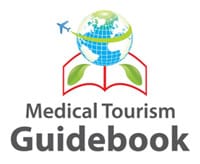One definition of medical tourism could be; “the set of activities in which a person travels often long distance or across the border to avail medical services with direct or indirect engagement in leisure, business or other purposes.”
There are several synonyms accepted across the globe for medical tourism, with the most prominent being ‘health tourism,’ medical travel,’ healthcare travel,’ global healthcare’ and ‘value medical travel.’ In this document, we have used the term ‘medical tourism’ throughout to refer to the industry.
Medical tourism services can be described as being ‘inbound.’ i.e. they refer to the services provided by the recipient country, or they can be termed as ‘outbound,’ meaning that they relate to activities that take place in the patient’s country of origin.
Background and Methodology
This document is combination of survey report and intense research done by ExHealth Team over six month period. The survey results are presented as summary and research results are presented in analysis and/or commentary.
The Survey
The survey is responded by 95% professionals closely involved with the medical tourism industry, the purpose of this survey is to gain insights into aspects of experts, with the knowledge gleaned being utilised to inform interested parties about the latest trends and developments in this specialised field. The survey was conducted on-line during July 2010.
The survey was designed to have an international reach and was sent to parties in North America, South America, Africa, Europe, the Middle East and Gulf regions, Asia and the Far East.
The Research
The research was conducted by ExHealth, an independent healthcare media and marketing organisation based in Dubai Healthcare City, Dubai, UAE and was completed under the supervision of Dr. Prem Jagyasi, a renowned medical tourism consultant, who has visited more than 20 countries and spoken at 30 international congresses throughout the course of his involvement in this sector of the healthcare industry. Dr. Jagyasi has published numerous articles on medical tourism in international publications.
Survey Participants
The survey format was a qualitative one and in total, 159 valid responses were received. The survey was sent to medical tourism professionals and 95% of the respondents evaluated themselves as being closely involved with the medical tourism industry directly or indirectly, such as having a background/experience in either healthcare, insurance, tourism, facilitation or media services in relation to the industry. Respondents were asked to class themselves into one of three categories, with 84 identifying themselves at the ‘Senior/Top/Consultant/Expert Level’. This number equates to 63% of the respondents. Forty-two (42) of the respondents categorised themselves as being at the ‘Manager/Middle Level,’ a number equating to 31%. Seven (7) of those who replied placed themselves in the ‘Junior Level’ category, a figure which corresponds to 5%. Not every respondent gave replies to all of the questions/statements.
95% surveyed were involved in the Medical Tourism Industry
- 63% – Senior/Top/Consultant/Expert Level.
- 31% – Manager/Middle Level
- 5% – Junior Level
Survey Questions
The survey asked for responses to questions/statements and was designed to elicit levels of comprehension and opinions from industry professionals on various aspects of medical tourism. The topics that were covered included perceptions over preferred countries, reasons for travel, challenges to the industry and what are the essential components of a good medical tourism destination. The contacts were also asked if they were interested in contributing to the aforementioned medical tourism guide, which is currently being compiled.
The questions contained within the survey were developed over a six-month period and based on intensive research. The survey’s remit was primarily to gauge attitudes and opinions and was not designed to comprehensively cover all aspects of medical tourism. The questions were formulated to elicit answers that would reveal the respondents’ perceptions and opinions about the medical tourism industry’s terms, trends, status, opportunities, challenges and values, amongst others. They were also structured to provide valuable information that could be used to benefit the individual consumer as well as the industry as a whole.
The survey questions were limited to garnering responses that would provide an understanding of medical tourism terms, trends, opportunities and challenges. The survey didn’t tackle issues relating to the industry’s size, the number of patients that travel to other countries for healthcare and other facts and figures, as these have already been tackled extensively by other research organisations. A number of the questions had limited answer options that were based on an already established observation. For instance, only seven options were included when asking which was the preferred term for the industry, as this figure resulted from research that revealed that there were no other terms in use. Contributors to the survey had the opportunity to include personal comments at the end and these were also taken into account when the results of the survey were compiled.
Survey Compilation
The survey findings to each of the posed questions are presented in both graphic and textual form, with the text comprising two sections, ‘Result Summary’ and ‘Analysis.’ ‘Result Summary’ gives the statistical percentage breakdown of the answers and ‘Analysis’ provides a subjective view of these results. This latter commentary is the sole interpretation of Dr Prem Jagyasi and it is not necessarily representative of the views of the survey participants.
Further Use
The knowledge gleaned will as well as provide important information for a soon-to-be published guidebook for consumers who are considering undertaking treatment abroad.





